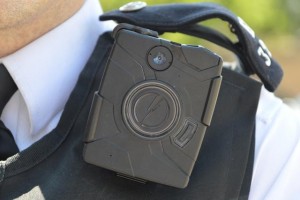 It is well-known that although Payton Manning may not have been one of the most athletic quarterbacks to grace the NFL, he was most certainly one of the best-prepared. Manning spent inordinate amounts of time studying films of his opponents; he claims to have a “Rain Man-like” memory for plays that might have occurred many years ago. He used this information to structure his plays and become one of the most successful quarterbacks in modern NFL history.
It is well-known that although Payton Manning may not have been one of the most athletic quarterbacks to grace the NFL, he was most certainly one of the best-prepared. Manning spent inordinate amounts of time studying films of his opponents; he claims to have a “Rain Man-like” memory for plays that might have occurred many years ago. He used this information to structure his plays and become one of the most successful quarterbacks in modern NFL history.
What Does Payton Manning Have to Do with Law Enforcement?
Think of the footage captured by the BWC (Body Worn Camera) as game film. Prior to the BWC, law enforcement used the footage captured by dash cams to help in training. The problem is that this footage is often blurry and shot from such a distance its use is far more limited than that captured by the BWC.
This gives LEOs an unprecedented opportunity to review and learn more about field tactics than at any time in modern history. The more of this footage a police department has access to, the more valuable it becomes as a training tool.
It is a well-known fact that evaluating police training and finding ways to improve it can be extremely challenging. One of the reasons for this is that most of the training manuals and guides are far out of date and there isn’t very much data to help support during training and subsequent field tactical work. According to David Makin, Ph.D. and Dale Willits, Ph.D., both assistant professors of policing at Washington State University, ” Training, in general, has been really poorly evaluated.”
Understanding the Outcome
By taking the time to analyze the data collected from BWC film footage recorded by officers involved in both good and bad situations, trainers and officers can learn a lot. Makin goes on to say, ” By gathering more information on how officers apply training in the field, we can understand how effective modern training is. How are officers deviating from practice and are the outcomes better or worse than if they stuck to the by-the-book methods?”
By being able to replay BWC footage, instructors have the opportunity to share their findings during classes at the police academy with new recruits or during on the job training sessions. Being able to see officers in action during both use-of-force and non-use-of-force situations allows trainers and evaluators to determine if the current training techniques are working as intended or if changes need to be made to ensure officers are better prepared to do their jobs.
The more information that can be gathered, the better-prepared current and future officers will be to deal with their everyday work life. Yet, some still wonder if by using BWC footage to show real-life situations it might prove to be too much of an information overload for officers than a useful tool. At what point does an officer have so much information stuffed into their heads, that it can make it harder for them to effectively perform their jobs.
